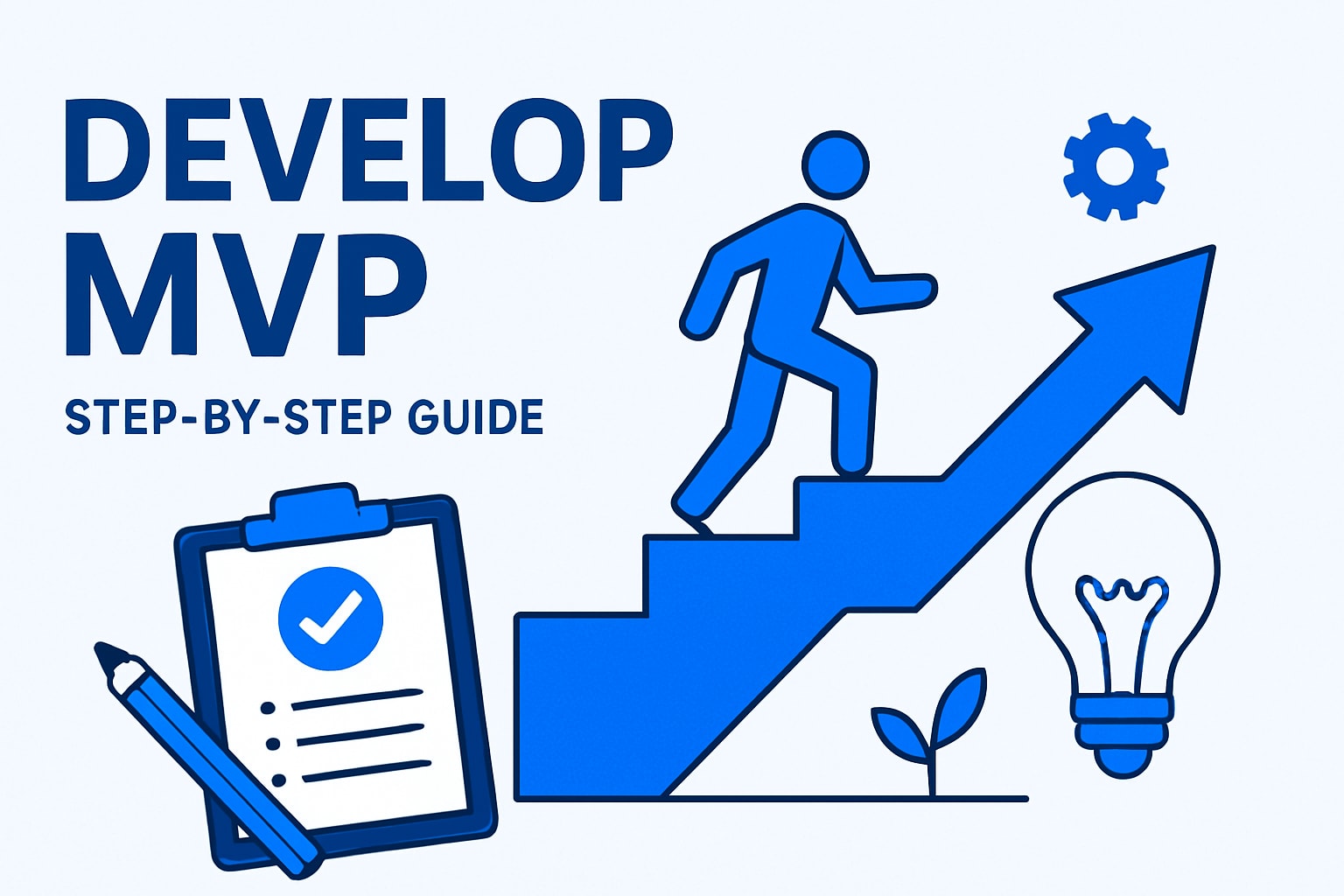Launching a successful MVP can make or break your business in the fast-paced 2025 tech landscape. Speed-to-market and cost-efficiency are more crucial than ever, and those who develop mvp strategies effectively are leading the pack.
This guide walks you step-by-step through the current best practices from market validation to launch. Drawing on proven frameworks and real-world examples, you’ll discover how to turn your vision into a product that wins users and drives growth. Ready to build smarter and faster? Let’s dive in.
Understanding MVPs in 2025: Trends and Fundamentals
Launching a new product in 2025 is no small feat. Whether you are a startup or an established enterprise, understanding how to develop mvp solutions that meet market demands is crucial. So, what exactly is an MVP? At its core, a Minimum Viable Product is a streamlined version of your product, built with just enough features to validate your idea and gather user feedback.
The process to develop mvp offerings has changed dramatically over the past few years. Today, development cycles are shorter, competition is fiercer, and tools like no-code and AI platforms are making MVP launches more accessible than ever. Speed and adaptability are now the name of the game.
Let's look at the top MVP trends shaping 2025:
| Trend | Why It Matters | Example Impact |
|---|---|---|
| AI Integration | Automates features, personalizes UX | Smarter chatbots, analytics |
| No-Code Platforms | Rapid prototyping, cost savings | Launch in weeks, not months |
| Scalability Focus | Prepares for fast user growth | Easy infrastructure upgrades |
| Rapid Prototyping | Quicker iterations and testing | Faster feedback cycles |
Leveraging these trends, companies can develop mvp products that are both scalable and adaptable. In fact, How to Build Scalable MVPs highlights how no-code tools like Bubble have enabled startups to launch MVPs in as little as 4-6 weeks, often at a fixed cost.
Why are MVPs so valuable today? Here are the key benefits:
- Reduce risk by testing assumptions before a full-scale launch
- Validate product-market fit faster using real user data
- Lower upfront costs, making innovation more accessible
- Gather early feedback to guide future development
Modern approaches to develop mvp solutions differ greatly from traditional methods. Here's a quick comparison:
| Aspect | Traditional MVP | Modern MVP (2025) |
|---|---|---|
| Development Time | 3-6 months | 4-6 weeks |
| Cost | High, custom-coded | Lower, often fixed-price |
| Tools | Custom frameworks | No-code, AI, cloud-native |
| Flexibility | Hard to pivot | Easy to iterate and scale |
Recent success stories underline the power of the modern MVP approach. For example, a SaaS startup used a no-code platform to develop mvp features, onboarded their first 1,000 users in under two months, and secured investor interest based on real traction. Industry data shows that over 70% of startups now use MVPs to validate ideas, and those who do are twice as likely to achieve product-market fit.
However, misconceptions still linger. Some believe MVPs are just "half-baked" products or that skipping robust validation will save time. In reality, the most successful teams develop mvp offerings by prioritizing essential features, embracing rapid feedback, and using scalable tools from day one.
To sum up, mastering MVP fundamentals in 2025 means staying agile, leveraging new technologies, and always keeping the end user in focus.
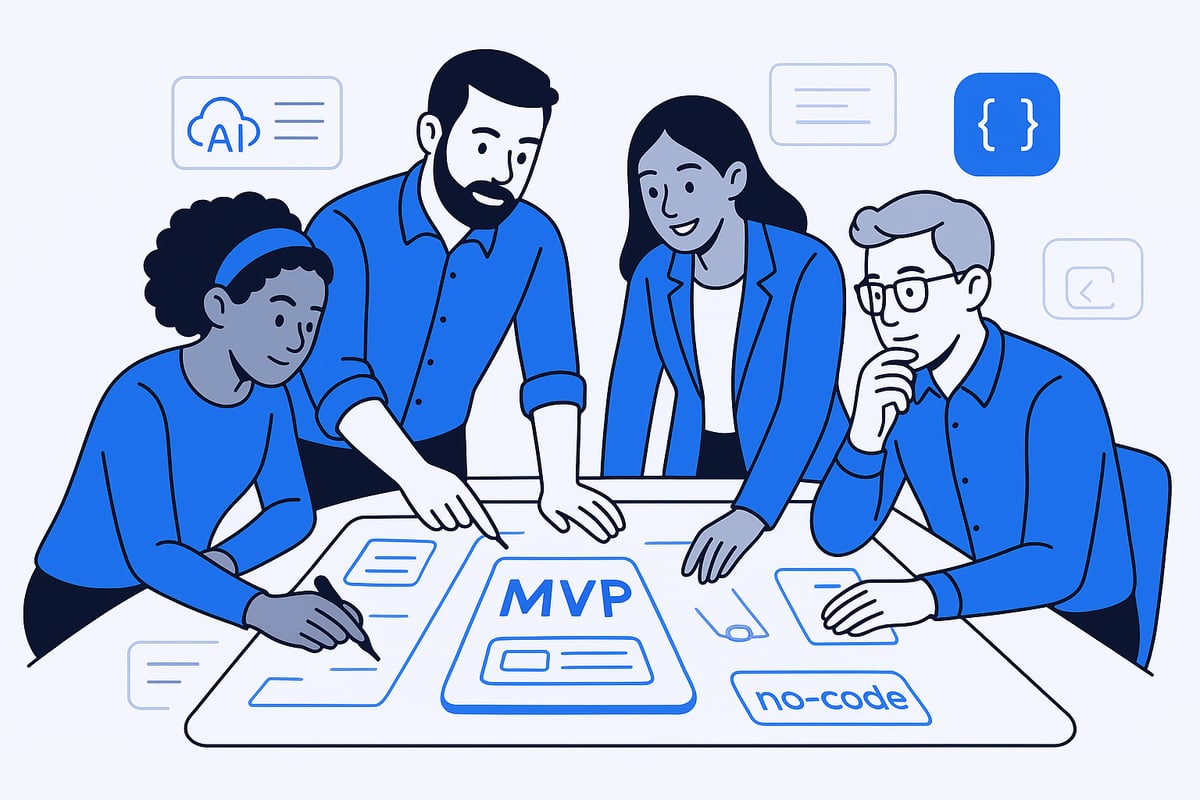
Step 1: Market Research and Idea Validation
Launching any product in today's tech world without solid research is like setting sail without a compass. To successfully develop mvp solutions that solve real problems, you must first validate your idea and the market behind it. This step saves you time, money, and frustration later.
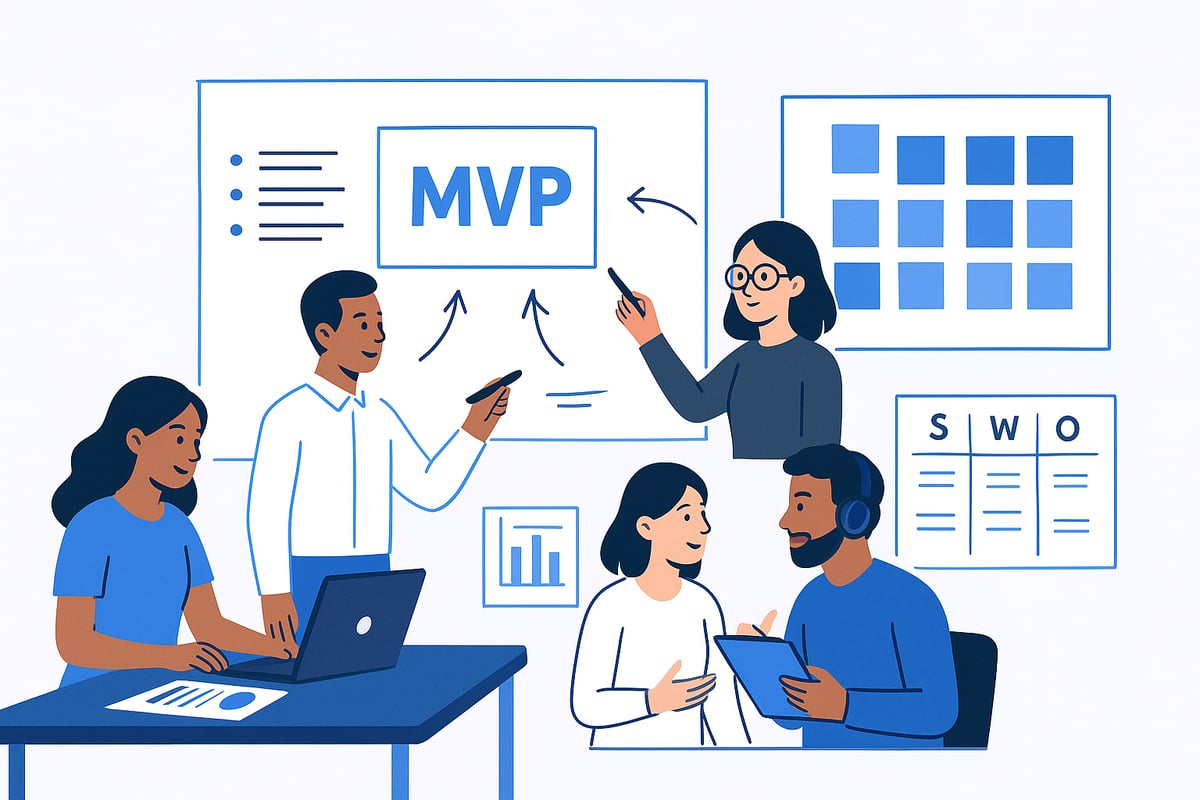
Why Market Research Is Critical
Before you develop mvp features or write a single line of code, research gives you a reality check. It helps answer, "Is there a real need for this solution?" Skipping this step is a leading cause of startup failure. In fact, industry research shows that 35% of startups fail because there is no market need for their product.
Methods for Validating Your MVP Idea
Validation starts with talking to real people. Use these methods to test your assumptions:
- Customer Interviews: Speak directly with potential users to uncover their pain points.
- Surveys: Gather quantitative data on needs, preferences, and willingness to pay.
- Competitor Analysis: Study similar products to identify gaps and opportunities.
- Problem-Solution Fit: Clearly define the problem and ensure your solution addresses it.
To go deeper, check out this practical guide to Market Research for Tech Products for actionable steps and templates.
Frameworks and Tools for Validation
Several frameworks help structure your research and validation process when you develop mvp projects:
| Framework | Purpose | Use Case |
|---|---|---|
| Lean Canvas | Map out your business model | Early-stage planning |
| SWOT Analysis | Identify strengths and threats | Market positioning |
| Value Prop Map | Clarify user needs and value | Messaging and feature focus |
Use digital tools like Google Forms for surveys or Miro for mapping ideas. These frameworks keep your insights organized and actionable.
Identifying Target Users and Early Adopters
Not everyone is your customer. Focus on finding your ideal user profile:
- Demographics: Age, role, industry, location.
- Behavior: Current tools used, frustrations, tech savviness.
- Early Adopters: Those most eager to try new solutions and give feedback.
Early adopters are critical as they provide honest opinions that help you develop mvp features that truly matter.
Using Data to Prioritize Market Needs
Data-driven decisions reduce the risk of building the wrong product. Analyze competitor reviews, survey data, and interview notes. Look for patterns in pain points and feature requests. Prioritize needs that are frequent, urgent, and underserved.
Here's a quick checklist:
- Is this a widespread problem?
- Are users willing to pay for a solution?
- Are competitors failing to address key issues?
Real-World Example: Pivoting Based on Feedback
Imagine a startup that set out to develop mvp fitness tracking software. Through early interviews, they discovered users cared more about nutrition tracking than workouts. By pivoting their focus, they avoided wasted effort and launched a product that gained rapid traction.
Key Validation Statistics
- 35% of startups fail due to lack of market need.
- Products built after strong validation are 2x more likely to reach product-market fit.
- Teams that develop mvp features based on real feedback iterate 50% faster post-launch.
Best Practices for Documentation
Document every step of your research journey:
- Keep detailed notes from interviews.
- Summarize survey results in spreadsheets.
- Record key decision criteria and reasons for pivots.
This habit not only guides your current project but also streamlines future iterations as you continue to develop mvp solutions.
Step 2: Defining Core Features and User Flows
Defining your core features and mapping user flows is the heart of any effort to develop mvp. With limited time and resources, focusing on what matters most helps avoid wasted effort and ensures your MVP delivers real value from day one.
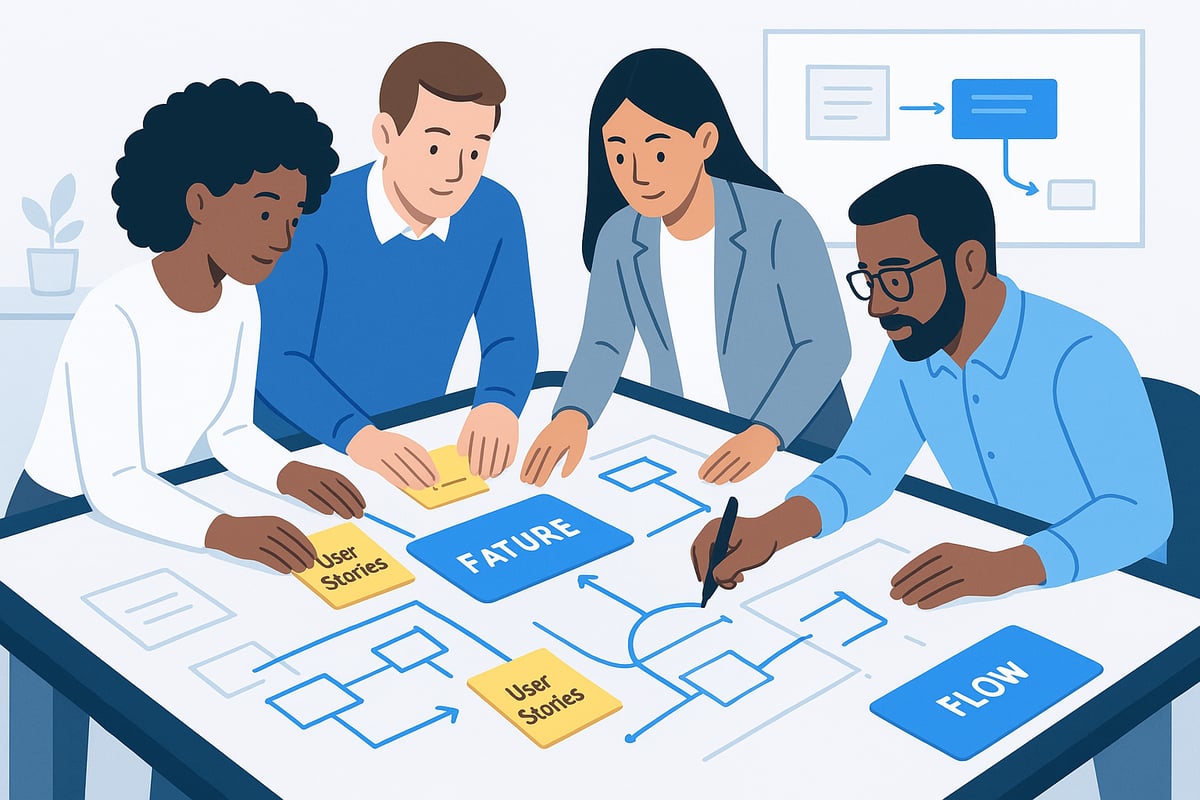
Why Feature Prioritization Matters
When you develop mvp, prioritizing features is crucial. The temptation to add every idea can lead to delays, budget overruns, and a muddled product. Instead, successful teams focus on must-haves that solve the main user problem.
Popular prioritization techniques include:
| Method | Focus | Best For |
|---|---|---|
| MoSCoW | Must, Should, Could, Won’t | Quick sorting |
| Kano Model | User delight vs. expectations | User-driven products |
| User Story Mapping | End-to-end journey | Complex workflows |
These frameworks help you decide what to include in your MVP and what to save for later. Using a method like MoSCoW, you can quickly filter features that are essential from those that are simply nice to have.
Techniques for Defining Core Features
To develop mvp efficiently, work with your team and stakeholders to define the blueprint. Start by listing all possible features, then categorize each as a must-have or nice-to-have. Use structured techniques like the Kano model to gauge which features will truly delight users versus those that only meet basic expectations.
User story mapping is especially helpful for SaaS and mobile app MVPs. It allows you to visualize the user journey, pinpoint pain points, and sequence features in logical order. This approach ensures that you’re building a product that makes sense from the user’s perspective.
Modern approaches also leverage no-code and low-code tools for quick prototyping. Frameworks discussed in No-Code Solutions for Enterprises show how enterprises can rapidly prioritize and launch features without heavy engineering investments.
Mapping User Flows for MVP Success
Clear user flows are essential as you develop mvp. Start by mapping the primary journeys your users will take. Focus on core tasks, such as onboarding, main actions, and feedback loops. Use wireframes or simple diagrams to visualize these flows.
Involve stakeholders and potential users during this phase. Their input can reveal friction points and help clarify which features are truly essential. For B2B MVPs, mapping the decision-maker’s journey is just as important as mapping end-user flows.
Real-World Examples and Avoiding Pitfalls
Consider how leading SaaS startups use a four-step MVP framework: define the problem, list features, map user stories, and build a features catalog. This approach keeps the process focused and actionable.
One common pitfall when you develop mvp is feature creep. Teams often over-engineer by adding too many features too soon. Stick to your prioritization framework and regularly review the feature list with your team to stay on track.
Competitors who succeed at rapid MVP launches often use modular blueprints and user stories catalogs, making it easy to iterate and add features post-launch without heavy rework.
By applying these strategies, you’ll ensure your MVP is lean, focused, and positioned for early success.
Step 3: Designing the MVP Experience
Design is the heartbeat of any effort to develop mvp that resonates with users. In 2025, intuitive UX/UI is no longer optional—it is a game-changer for adoption and retention. When you develop mvp, investing in thoughtful design from day one can mean the difference between a product people love and one they abandon.
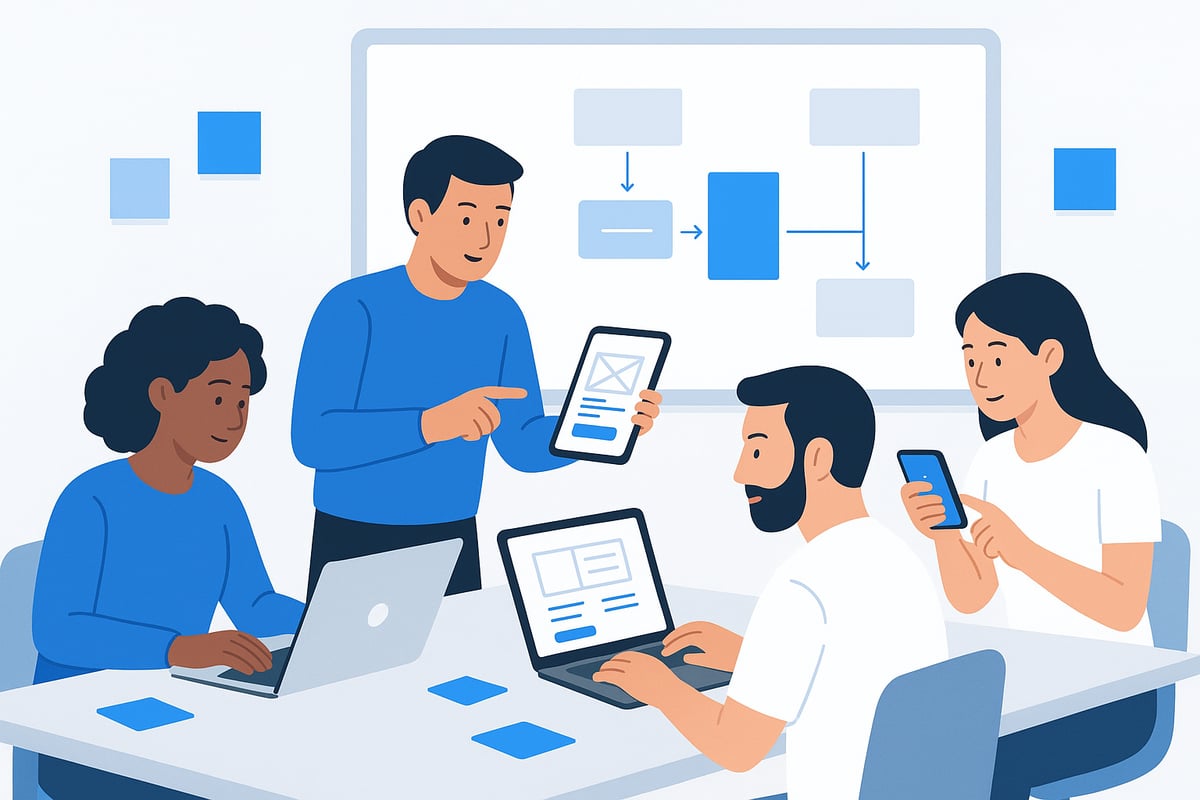
Laying the Foundation: Wireframing and Prototyping
The design journey begins with wireframing. This step helps founders and teams map out the core user flows before writing a single line of code. Sketching screens, even on paper or using digital tools like Figma and Sketch, lets you visualize how users will interact with your MVP.
Once wireframes are ready, move to prototyping. Digital prototypes bring ideas to life, allowing you to simulate interactions and gather feedback early. Modern no-code design platforms make it faster than ever to develop mvp prototypes, so you can test usability without heavy investment.
User testing is crucial at this stage. Invite real users or stakeholders to click through your prototype. Their feedback will uncover friction points and guide improvements before you lock in your design.
Responsive, Scalable, and On-Brand Design
Your MVP must perform beautifully on every device. Responsive design ensures that whether users access your product via mobile, tablet, or desktop, their experience remains seamless. Tools like Figma offer responsive layout features to streamline this process.
Scalable design systems are equally important. They bring consistency to colors, typography, and components, making it easier to develop mvp iterations and scale up as your product grows. Aligning your design with your brand identity from the start builds trust and recognition.
Iterative design is the secret weapon. Rapid cycles of feedback and revision help teams quickly adapt to user needs. In fact, studies show that intuitive design can improve user retention rates by up to 30%. Many top competitors prioritize cross-device usability and simple interfaces, setting a high bar for new entrants.
To dive deeper into industry best practices and see how seasoned teams approach design and development, check out Designing and Developing Applications.
In summary, when you develop mvp, invest in purposeful design. Map user journeys, prototype quickly, test with real users, and keep your design flexible. The right approach here will amplify user satisfaction and set your MVP apart in a crowded market.
Step 4: MVP Development—Choosing the Right Tech Stack
Selecting the right tech stack is one of the most strategic decisions when you develop mvp for 2025. Your choice impacts not only how quickly you can launch but also how easily you can scale and adapt as your product grows. Let's break down the key factors to consider and the latest options available.
Tech Stack Selection Criteria
When you develop mvp, prioritize scalability, development speed, cost, and future growth. Assess your team's technical skills, budget, and the complexity of your product. Scalability is critical—will your stack support thousands of users if your MVP takes off? Speed matters too, since rapid prototyping shortens your feedback loop.
Popular 2025 Tech Stacks
In 2025, founders have more choices than ever. Traditional frameworks like React, React Native, and Node.js remain popular for their flexibility and vast ecosystem. No-code and low-code platforms, such as Bubble, Webflow, and Glide, are now mainstream, enabling rapid MVP launches with minimal coding. AI integrations are also reshaping how teams develop mvp, automating tasks and personalizing user experiences. For a deeper dive into these evolving tools and their benefits, check out this guide to No-Code/Low-Code Tools for MVP Development in 2025.
No-Code/AI vs. Custom Development
No-code and AI-powered platforms empower non-technical founders to develop mvp quickly and affordably. These tools are ideal for simple products, market testing, or when time-to-market is critical. Custom development, on the other hand, suits complex features or products needing full control over performance and scalability. Many startups start with no-code then migrate to custom stacks as their needs evolve.
Cost and Time Comparison
| Stack Type | Speed to Launch | Upfront Cost | Scalability | Best For |
|---|---|---|---|---|
| No-Code/Low-Code | 2-6 weeks | Low | Moderate | Rapid testing, lean teams |
| AI-Integrated | 3-6 weeks | Moderate | High | Smart automation, data apps |
| Traditional Coding | 6-12 weeks | High | Very High | Custom logic, full control |
When you develop mvp, weigh these factors against your goals. No-code can get you to market in weeks, while traditional coding may offer more flexibility for future growth.
Scalability and Architecture
Choosing a modular, cloud-native architecture will help your MVP grow seamlessly. Modular codebases, microservices, and serverless technologies are popular with startups that want to scale from MVP to full product with minimal rework. Many successful companies leverage open-source frameworks and cloud providers to future-proof their tech.
Managing Technical Debt and Vendor Lock-In
As you develop mvp, avoid shortcuts that lead to technical debt. Document your architecture decisions and ensure code quality, even in early versions. To prevent vendor lock-in, choose platforms and tools that allow easy migration or integration with other services. This will save you time and money as your product evolves.
In summary, selecting the right tech stack is a balancing act between speed, scalability, and budget. By considering your product vision and leveraging the latest tools, you can develop mvp that sets the stage for long-term success.
Step 5: Testing, Feedback, and Iteration
Launching a product without testing is like sailing a ship without a compass. To successfully develop mvp solutions that resonate with users, early and ongoing testing is a must. This step ensures your MVP meets real needs, reduces costly mistakes, and sets the stage for rapid improvement.
The Importance of Testing in MVPs
Testing is the backbone of every effort to develop mvp products that users love. It offers clear insights into how your product performs in real-world settings. Instead of waiting for a final version, introduce testing early and often. This approach catches issues before they snowball, saving time and resources. Early testing also builds trust with stakeholders who want proof that your MVP works as intended.
Types of MVP Testing
To develop mvp offerings that stand out, use a mix of testing methods:
- Usability Testing: Observe how users interact with your MVP. Identify pain points and confusing flows.
- Performance Testing: Ensure your MVP loads quickly and handles traffic surges.
- Security Testing: Protect user data, especially if your MVP handles sensitive information.
- A/B Testing: Compare different versions of features or layouts to see which performs better.
Each type of testing uncovers unique insights, helping you evolve your MVP from good to great.
Gathering and Acting on User Feedback
Feedback fuels improvement as you develop mvp projects. Use surveys, interviews, and analytics to gather actionable insights. Ask open-ended questions to understand user frustrations and preferences. Monitor heatmaps and click paths to spot unexpected behaviors.
List of feedback collection methods:
- One-on-one interviews
- In-app surveys and polls
- Analytics dashboards
- Social media listening
Document feedback systematically, then prioritize the most impactful suggestions for your next iteration.
Iteration: Refining Your MVP
Iteration is the heartbeat of the develop mvp process. After each testing round, review the results, identify patterns, and adjust your product. This cycle of test, learn, and improve helps you stay agile and competitive.
Modern tools, especially those powered by AI, can speed up this loop. For example, AI-Powered MVP Development: Build 10x Faster in 2025 explains how AI enables rapid testing, automated feedback analysis, and swift updates. Companies that embrace this mindset often pivot quickly, turning early missteps into long-term wins.
Tools, Examples, and Best Practices
To develop mvp solutions effectively, leverage tools like error tracking platforms, performance monitors, and user analytics software. Real-world MVPs, such as those from SaaS startups, often use structured feature sprints and ongoing support to adapt to user needs.
A few best practices to remember:
- Test early, test often
- Involve real users in every cycle
- Balance speed with quality assurance
Continuous improvement is the secret to MVP success.
Step 6: Go-to-Market Strategies and Measuring Success
Launching your MVP is more than a finish line, it is the start of your product’s journey. In 2025, a strong go-to-market strategy is essential if you want to develop mvp projects that break through the noise. Let us explore how to map a launch, build your brand, capture early users, and measure what matters.
Planning Your Go-to-Market Strategy
Timing, channels, and messaging can make or break your launch. Start by identifying your target audience and the best platforms to reach them. In 2025, this might include social media, niche communities, or even leveraging The Rise of No-Code AI Agents for automated outreach and support.
To develop mvp projects that stand out, align your launch with market trends and user needs. Create a detailed launch checklist covering PR, influencer outreach, and content marketing. Review competitor launches for inspiration, and set clear KPIs for your own success.
Building Your Launch Presence & Brand
A launch-ready website and strong product branding are crucial. Use consistent visuals, messaging, and tone across all channels to build trust and recognition. Make sure your site is optimized for conversions, with clear calls-to-action and easy onboarding.
For teams looking to develop mvp rapidly, no-code platforms can help you build landing pages and brand assets quickly. Highlight your value proposition upfront, and ensure your messaging speaks directly to your early adopters’ pain points. Consider a beta signup to capture leads and gather feedback from day one.
Acquiring Early Users and Measuring Success
Early traction is vital when you develop mvp products. Use tactics like beta programs, referral incentives, and strategic partnerships to attract your first users. Public relations, targeted ads, and content marketing can boost visibility.
Track these key MVP metrics:
| Metric | Why It Matters |
|---|---|
| Activation | Are users engaging? |
| Retention | Do users return? |
| Churn | Where do you lose them? |
| ROI | Is your MVP profitable? |
Leverage analytics tools to monitor real-time performance. Use data to refine your roadmap and prioritize future features based on user engagement and feedback.
Learning from Launches and Avoiding Pitfalls
Study MVPs that gained traction through smart launches. Many successful teams develop mvp projects with a feedback loop, iterating quickly after launch. Avoid common mistakes like ignoring user feedback, launching without a clear value proposition, or neglecting support.
Competitors who excel often offer ongoing branding and website support post-launch. Document your process, track results, and be ready to pivot based on what you learn. A well-executed launch sets the tone for your product’s growth and long-term success.
Now that you’ve seen how launching an MVP in 2025 is all about speed, smart validation, and using the right tech (no code and AI make a huge difference), why not take the next step toward your own launch? Whether you’re a startup founder or leading an enterprise project, turning your idea into a scalable product shouldn’t take months of waiting or mountains of budget. If you’re ready to move fast and see real results, check out how you can Launch Your MVP in Weeks, Not Months and start building your success story today.




About Big House
Big House is committed to 1) developing robust internal tools for enterprises, and 2) crafting minimum viable products (MVPs) that help startups and entrepreneurs bring their visions to life.
If you'd like to explore how we can build technology for you, get in touch. We'd be excited to discuss what you have in mind.
Other Articles
Discover the 8 best low code development platforms for 2025 Compare features pricing pros and cons to find the ideal solution for rapid app creation and growth
Discover 7 essential application technologies shaping 2025. Learn trends, benefits, and expert tips to help your business innovate and stay ahead of the competition.
Discover the complete 2025 app and software development guide. Explore trends, best practices, tools, and strategies to build successful, future-ready solutions.

